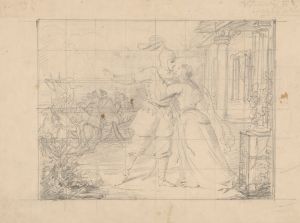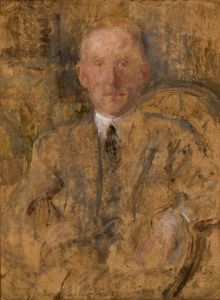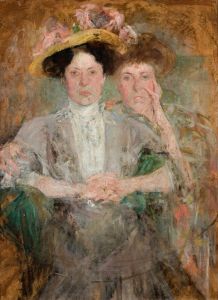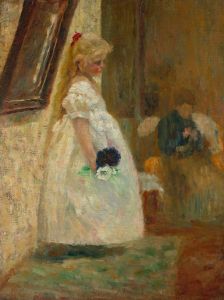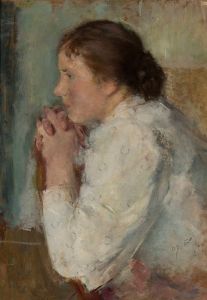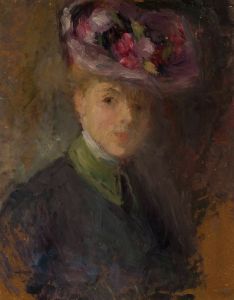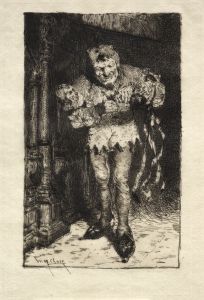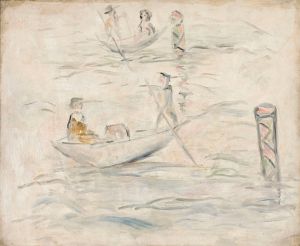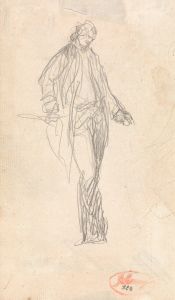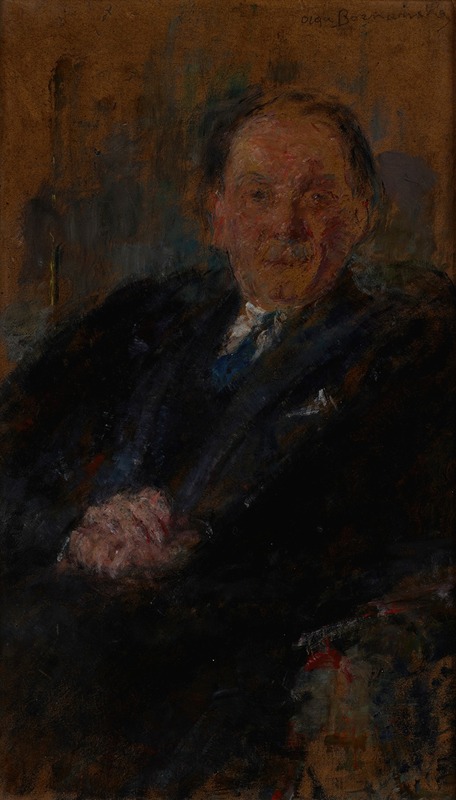
Portrait of Jan Rubczak
A hand-painted replica of Olga Boznanska’s masterpiece Portrait of Jan Rubczak, meticulously crafted by professional artists to capture the true essence of the original. Each piece is created with museum-quality canvas and rare mineral pigments, carefully painted by experienced artists with delicate brushstrokes and rich, layered colors to perfectly recreate the texture of the original artwork. Unlike machine-printed reproductions, this hand-painted version brings the painting to life, infused with the artist’s emotions and skill in every stroke. Whether for personal collection or home decoration, it instantly elevates the artistic atmosphere of any space.
Olga Boznańska, a prominent Polish painter, is renowned for her distinctive style and contribution to the art world during the late 19th and early 20th centuries. One of her notable works is the "Portrait of Jan Rubczak," which exemplifies her mastery in portraiture and her unique approach to capturing the essence of her subjects.
Olga Boznańska was born on April 15, 1865, in Kraków, Poland, and she became one of the most significant figures in Polish art. She was known for her impressionistic style, which often focused on the subtle interplay of light and shadow, as well as her ability to convey the psychological depth of her subjects. Boznańska's work is characterized by a muted color palette and a delicate, almost ethereal quality, which sets her apart from many of her contemporaries.
The "Portrait of Jan Rubczak" is a testament to Boznańska's skill in capturing the personality and mood of her sitters. Jan Rubczak was a fellow artist, known for his work in painting and printmaking. He was part of the vibrant artistic community in Poland during the early 20th century, and his association with Boznańska highlights the interconnectedness of artists during this period.
In this portrait, Boznańska employs her signature style, using soft brushstrokes and a limited color range to create a sense of intimacy and introspection. The painting likely reflects her interest in the psychological aspects of portraiture, as she often sought to reveal the inner life of her subjects rather than just their outward appearance. This approach aligns with the broader trends in European art at the time, where there was a growing interest in exploring the human psyche and emotions through visual art.
Boznańska's technique in the "Portrait of Jan Rubczak" involves a careful balance between detail and abstraction. While the features of Rubczak are rendered with precision, the background and clothing are treated with a looser, more impressionistic touch. This contrast draws the viewer's attention to the subject's face, emphasizing his expression and the mood conveyed through his eyes and posture.
The portrait is also notable for its composition, which reflects Boznańska's ability to create a harmonious and balanced image. The positioning of Rubczak within the frame, along with the subtle use of light and shadow, contributes to the overall impact of the painting. Boznańska's attention to detail and her sensitivity to the nuances of human expression make this portrait a compelling example of her work.
Olga Boznańska's contribution to art extends beyond her individual paintings. She was part of a broader movement of women artists who were gaining recognition and challenging traditional gender roles in the art world. Her success and acclaim helped pave the way for future generations of female artists in Poland and beyond.
The "Portrait of Jan Rubczak" remains an important piece within Boznańska's oeuvre, reflecting her artistic vision and her ability to capture the complexity of human emotion. It stands as a testament to her skill as a portraitist and her significant role in the history of Polish art.





